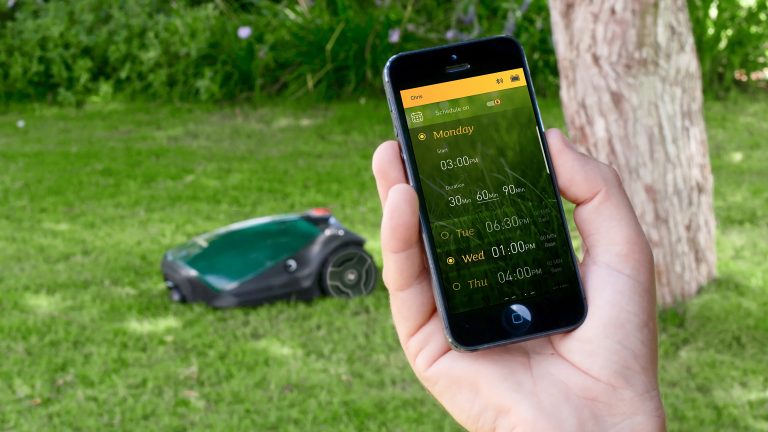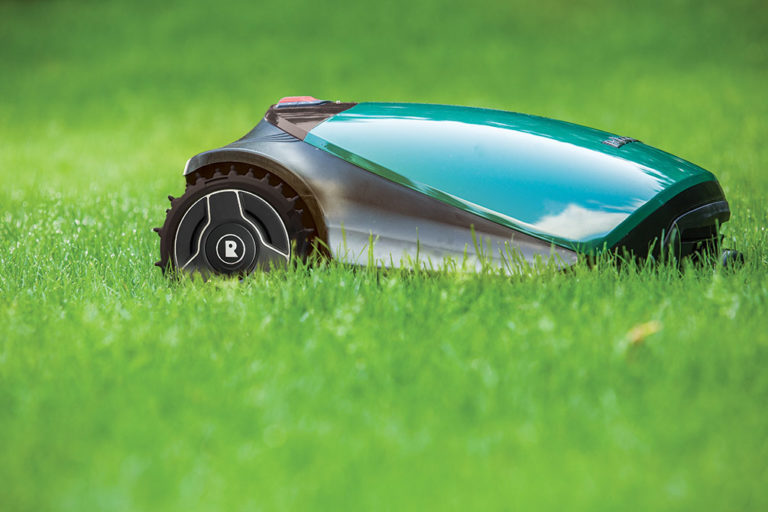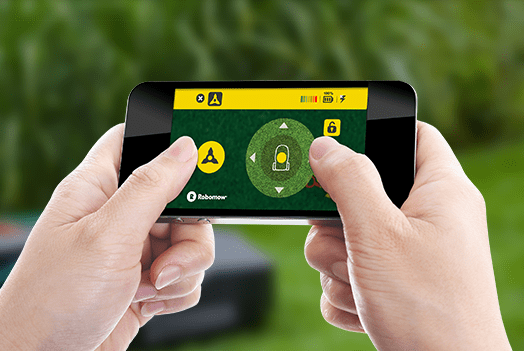How often should a robotic mower mow?
03.05.2021
When mowing with an electric or gasoline mower, it is clear: the lawn is usually mowed every 5-7 days during the growth phase with a maximum of one-third of the blade length cut each time. With a robotic mower, however, it is a little different. The device is usually on the lawn more frequently (every day or every other day), crossing every patch of the area at more or less regular intervals. Therefore, the question is raised: How often should a robotic lawnmower ideally mow?
Why is regular lawn mowing important?
It is probably clear that only regular lawn mowing leads to a perfect cut, where the lawn is the same length everywhere. If you only send your robotic lawnmower out every few days, you have to reckon with the fact that the robot will not go over every spot. Grass usually grows at a rate of 2 centimeters a week. This depends in particular on the ratio between area output and mowing times.
The second reason is the mulching function of a robotic mower. Unlike a lawn mower, which collects grass clippings directly in a bag, the robotic mower leaves the cut grass directly on the lawn. There, they decompose within a short time and thus supply the soil with important nutrients.
However, the mulch only serves as a fertilizing function if the lawn clippings are very fine. Otherwise, a layer can form over the lawn, preventing sufficient aeration. As a result, the lawn can become more susceptible to disease and mold, becoming matted. The more often the robotic lawnmower is on the move, the shorter the cut blades are and the faster they can decompose.
How often should the robotic lawnmower mow?
Ideally, a robotic lawnmower should go over every patch of lawn every two days. How often this is possible in theory, ultimately depends on the area capacity. If it is so close that it is not mathematically possible to achieve this value, a robotic lawnmower must be used more often than a model that cuts a lawn within a few hours.
Area performance and mowing times
For an area of 300 m², a robotic mower usually needs less time than for 2,000 m². However, this depends on a couple factors: the maximum area output according to the manufacturer's specifications, the condition of your garden and the mowing time. Let's say your robotic mower has an area capacity of 2,000 m², is in use 24 hours a day, and your garden has an area of 1,000 m². If you want to calculate the time needed to mow the area daily, use the following calculation:
24 hrs / (2,000 m² / 1,000 m²) = 12 hrs.
This would mean that your robotic lawnmower would have to be in operation for 12 hours a day if the entire lawn is to be mowed daily. If, on the other hand, you decide that an interval of every other day is sufficient, the time is reduced by half, i.e. a daily use of 6 hours is necessary.
According to the manufacturer, a robot that can be used 12 hours a day works much more efficiently- the daily duration to mow the lawn from the example is only 6 hours.
Powerful battery - long mowing times, short charging times
The more powerful the battery, the longer your robotic lawnmower will be in operation before it has to return to the charging station. If the charging intervals here are short, the work will be done in a shorter time overall. A robot that mows for 90 minutes before docking at the charging station for 60 minutes will have reached the mowing time of 6 hours after 9 hours (4 x 90 minutes + 3 x 60 minutes). If charging requires 120 minutes, the period is extended by another 3 hours.
More efficient mowing thanks to GPS
Some modern robotic mowers are equipped with GPS. Some models use satellite-controlled navigation to optimize their route. The robotic mower only passes over a few spots two or three times, reducing the mowing time.
Frequency of mowing depends on the time of year
In spring, the lawn begins to grow after hibernation. Plant growth is stimulated by warm and humid weather conditions, so it makes sense to use the robotic lawnmower daily.
In rather dry summers, lawns tend to grow much slower than in spring. It is important that the grass be left untrimmed a little longer than usual in order to shade the soil and thus protect it from further drying out, especially during hot spells. That means a robotic mower can sufficiently operate every 2-3 days. If it rains more often, the intervals can also be shortened.
In autumn, prepare the lawn for winter. By trimming once or twice a week, the lawn can once again recharge the necessary energy to get through the winter unscathed. As soon as the first frost sets in, it is time to winterize the robot and let the lawn rest.
Easy programming of mowing times
After purchasing a robotic lawnmower, it's normal to experiment with mowing times– and to adjust them afterwards when the kids are already romping around the garden in the mornings during school vacations. To change the programming quickly and easily, there are now numerous robotic lawnmowers that can be operated quite effortlessly via an app or even Alexa voice control. Handling your robotic lawnmower could hardly be easier!
Ultimately, there is no such thing as an optimal mowing interval. This is already clear from the fact that there are many opinions on this subject. After all, the growth of the lawn also depends on weather conditions and not every green responds the same after a two-day cut. Here it is simply a matter of trial and error until you find the frequency that best suits your particular lawn.
Products
Buy a Robomow
Robomow owner
About us
Sales & Support



